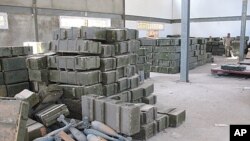Man-Portable-Air-Defense-Systems, or MANPADS, continue to pose a serious danger. In the wrong hands, shoulder fired anti-aircraft missiles threaten passenger air travel, the commercial aviation industry, and possibly military aircraft around the world.
Since 1975, 40 civilian airliners have been attacked with MANPADS. More than half of these attacks have taken place in Africa.
The use of MANPADS in conflict zones by insurgents has posed a threat to reconstruction and stabilization efforts as well as local economies around the world.
Most MANPADS have little military utility today since they are largely ineffective against modern military aircraft. Yet a number of countries still possess large stockpiles of MANPADS. While these outdated weapons may be of little use to a host country's military, they are prized systems for smugglers and terrorists. This makes improperly secured stockpiles of MANPADS a prime target for groups like al-Qaida.
Over the last decade, international awareness of the threat has grown, and some important steps have been taken to secure remaining stockpiles of MANPADS. Regulations have been tightened on exports of these weapons. And guidelines have been established for stockpile management.
In 2006, the U.S. government established an interagency MANPADS Task Force led by the State Department. The task force helps countries to secure their stockpiles, maintain reliable inventories of their systems, and safely dispose of MANPADS stocks that are no longer needed for their national defense. Since 2003, U.S. cooperation with more than thirty countries has led to the destruction of nearly 33,000 at-risk MANDPADS.
While there is no easy solution to the proliferation challenge posed by MANPADS, said U.S. Assistant Secretary of State for Political-Military Affairs Andrew Shapiro, the United States and the international community are working vigilantly to take steps to reduce the threat posed by these weapons.
Stopping MANPADS Proliferation

In the wrong hands, shoulder fired anti-aircraft missiles threaten passenger air travel, the commercial aviation industry, and possibly military aircraft around the world.
















